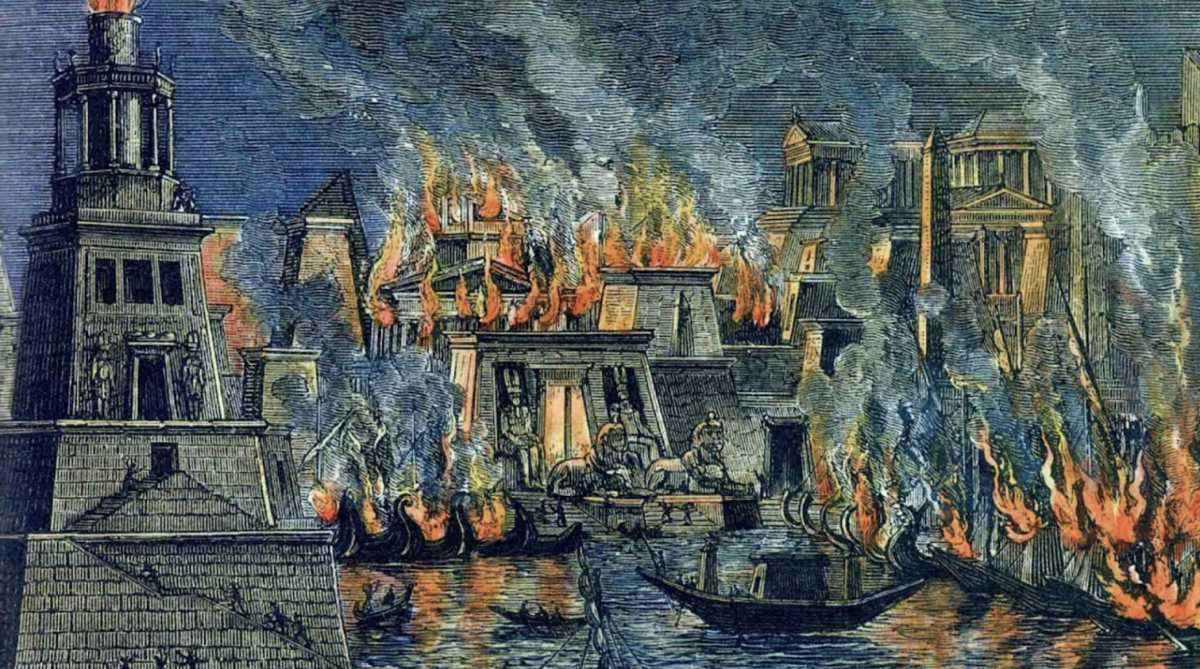In 711CE, Muslim forces invaded the Iberian peninsula with the intention of both expanding their territory, as well as to appeal to a plea for help by the Wittizans against the Visigoth ruler of Spain, and ruled for the next 700 years. The Muslims, known as the Moors, helped develop Spain’s, as well as the rest of Europe’s culture, contributing libraries, schools, impressive literature, poetry and architecture, and the roots of modern medicine and mathematics. They even introduced the lemon tree, the astrolabe and helped spread Greek Philosophy. In Al-Andalus, as it was called, people of all faiths lived together in harmony, resulting in one of the most productive intercultural relationships in history down to the present day.
The Umayyad Conquest of Spain
The conquest of Spain by the Umayyad Caliphate occurred in the midst of the Dark Ages in Europe. The continent was weak and divided after the fall of Rome, making it vulnerable to attacks by invading forces. The Muslims were quick to take advantage of the situation, converting Berber troops at the tip of Africa and gathering an army on the coast. In 711, they stormed across the Straits of Gibraltar with 7000 Berber tribesmen, led by General Ṭāriq ibn Ziyād, and invaded Europe. The Muslim forces easily defeated the army of the Visigoths, who controlled Spain at the time, and killed their tyrannical leader, Roderick, in a decisive battle.
The establishment of Al-Andalus marked a new chapter in the history of Spain. By 714, most of Spain and Portugal was under Muslim control, and the period between 711 and 756 was known as the dependent emirate when it was part of the larger Umayyad Dynasty. In 756, with the stability of Muslim Spain, Al-Andalus became an independent kingdom called the Emirate of Cordoba under the Umayyad Caliphate. It was founded by the Umayyad Prince Abd al-Rahman who fled to Spain after his family had been overthrown and massacred by a political coup. When Abd al-Rahman arrived, the kingdom was in disarray, and he set out to rebuild it. He implemented amazing irrigation technology, transforming the land with lemon trees, olive trees, artichokes, palm trees, avocados, and pomegranates. He also established a new trade system so the agriculture could generate great wealth.
Al-Andalus: A Center of Culture, Learning, and Tolerance
Cordoba grew into a cosmopolitan city – a city of people from many different backgrounds, home to a population of over 100 000, 70 libraries, over 3000 public baths and 700 mosques. The greatest of which was the Great Mosque of Cordoba, which is the largest mosque in the western Islamic world. Cordoba’s culture and scholarship flourished, with scholars from all over the Mediterranean visiting and studying there.
Around the tenth century, Cordoba became the greatest metropolis in Europe and the capital of the caliphate after Abd al-Rahman III declared himself caliph in 929. During the caliphate, there was extensive trade and culture, as well as the development of Al-Andalusian architectural masterpieces.
Spain’s Muslim community increased rapidly, with many of the indigenous population turning to Islam for the cultural and religious values it provided. Even with all of this, the Jewish and Christian populations were still treated extremely well and allowed to retain some freedom as long as they acknowledged Islamic power.
The Golden Age of Islamic Spain
Islamic culture was seen as “the culture of the book”, tolerant of both religious and non-religious learning. After paper was introduced from China in 751 CE through Arabia, books became more available than they ever had been in Rome and cheaper than in the Latin West.
In the 9th century, the Library of St.Gall, which was the largest in Europe, had only 36 volumes. The library of Cordoba, on the other hand, had around 500,000.
In a very short time, Arabic had become the “international language of science”, kind of like English today, resulting in Christians devoting themselves to the study of Arabic rather than Latin.
The fourth Umayyad ruler of Muslim Spain, Abd Al-Rahman II, who was extremely interested in both religious and non-religious sciences, wanted to show the world that his court was just as good as the court of caliphs in Baghdad, so he constantly recruited scholars to come and live in Al-Andalus. As a result, many scholars, poets, philosophers, historians and musicians migrated there.
One of which was Abbas bin Firnas who came to Cordoba to teach music, then mathematical theory, before becoming interested in flight. He constructed a pair of wings, made of feathers in a wooden frame and attempted to fly, beating Leonardo da Vinci by 600 years
Another reason for these migrations was the sudden increase in the building of public and private libraries, as well as mosques, hospitals and research institutions.
The Fall of Islamic Spain
Today there are only 250,000 Arabic manuscripts left, whereas in the 10th century there were public libraries of over 500,000. Millions of books must have perished since then, resulting in many great ideas being lost to history. It’s ironic that a civilization 1300 years ago was closer to achieving one of the most beautiful dreams humankind has ever had than we are today. 1300 years ago, one civilization managed to unite populations of many beautiful cultures and coexist in harmony. 1300 years ago, one civilization, while it did have its problems, had more acceptance and tolerance in their hearts than we do today.
But it’s not over just yet. We can still make a change. If a civilisation 1300 years ago could live harmoniously, we can too. It’s time for us to learn from those who came before us. It’s time for us to look for the future in our past.
Sources & Recommended Reading:
- Islam Spain, the history: Article for Senior Travellers – Odyssey Traveller (2023) Islam Spain, the history | Article for senior travellers – Odyssey Traveller. Available at: https://www.odysseytraveller.com/articles/history-of-islamic-spain/.
- Islamicity.org (2018) The rise and fall of Islamic Spain – PBS documentary, IslamiCity. Available at: https://www.islamicity.org/9544/the-rise-and-fall-of-islamic-spain-pbs-documentary/.
- Rashidun (no date) Encyclopædia Britannica. Available at: https://www.britannica.com/topic/Rashidun.
- ʿAbbasid Caliphate (2023) Encyclopædia Britannica. Available at: https://www.britannica.com/topic/Abbasid-caliphate.
- (no date) The Moorish influence on renaissance. Available at: https://webpages.uidaho.edu/engl257/Don%20Quixote/moorish_influence_on_renaiss.htm.
- Lunde, P. (no date) Science in Al-Andalus, Cities of Light. Available at: https://www.islamicspain.tv/the-science-and-culture-of-islamic-spain/science-in-al-andalus/.
- ʿAbd al-Raḥmān II (no date) Encyclopædia Britannica. Available at: https://www.britannica.com/biography/Abd-al-Rahman-II














